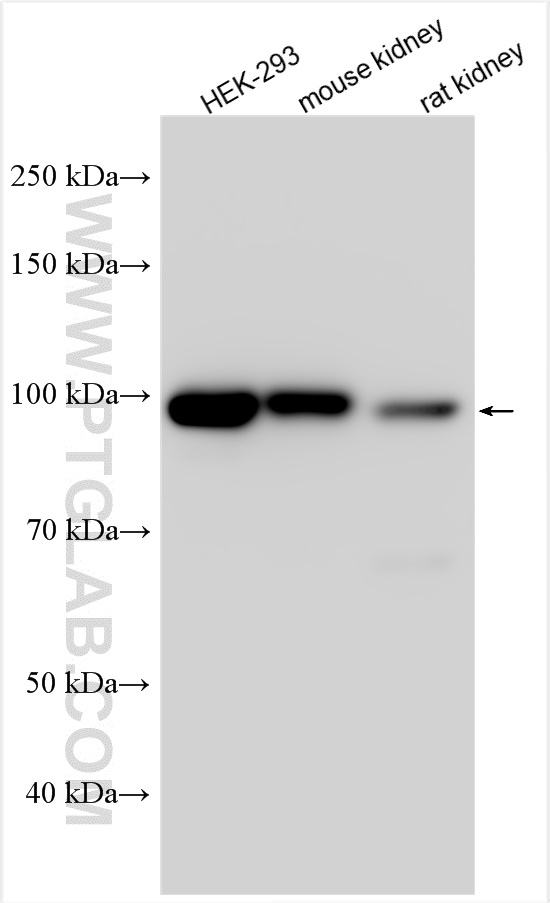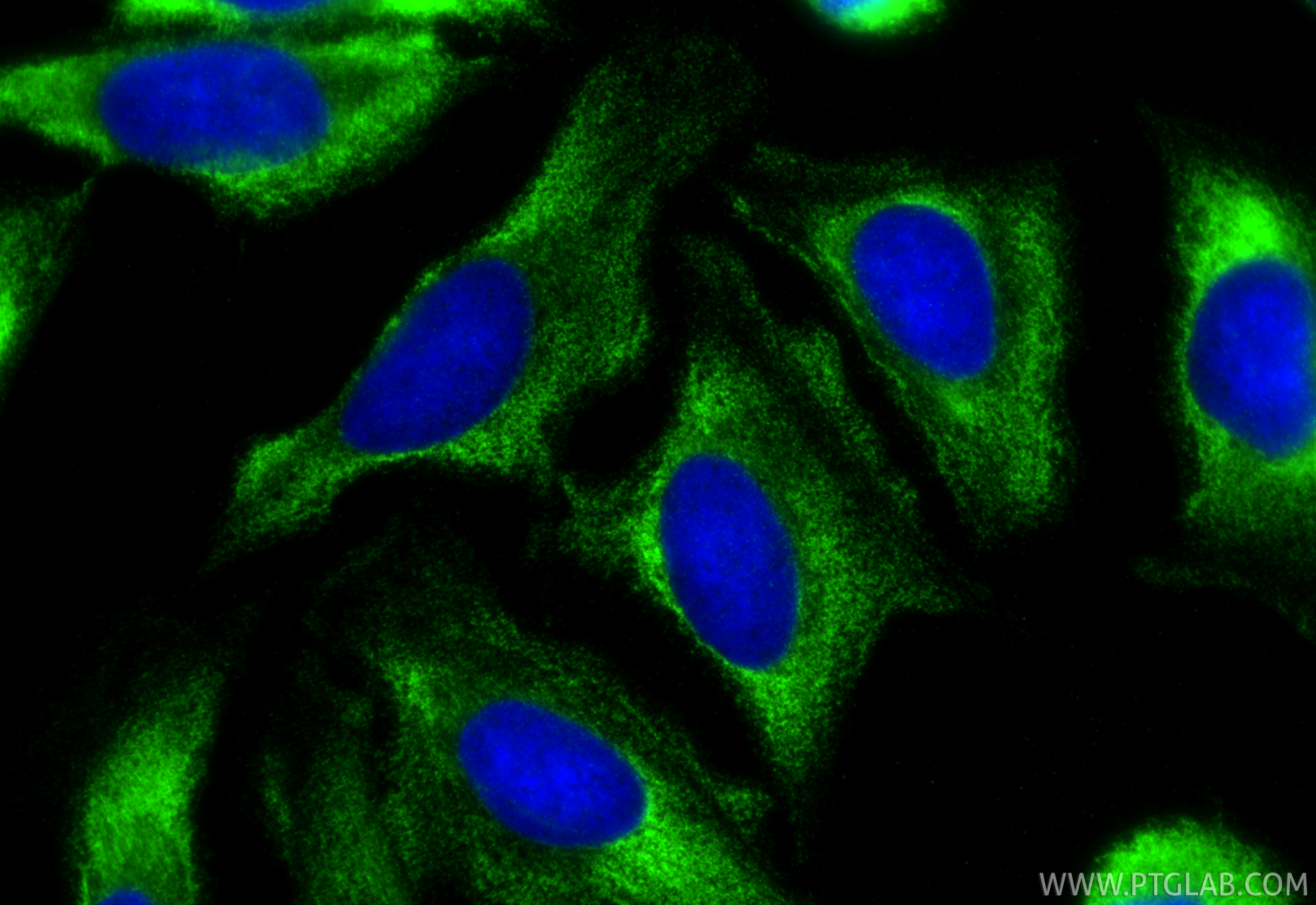验证数据展示
经过测试的应用
| Positive WB detected in | HEK-293 cells, mouse kidney tissue, rat kidney tissue |
| Positive IF/ICC detected in | U2OS cells |
推荐稀释比
| 应用 | 推荐稀释比 |
|---|---|
| Western Blot (WB) | WB : 1:500-1:2000 |
| Immunofluorescence (IF)/ICC | IF/ICC : 1:50-1:500 |
| It is recommended that this reagent should be titrated in each testing system to obtain optimal results. | |
| Sample-dependent, Check data in validation data gallery. | |
产品信息
17654-1-AP targets SLC26A7 in WB, IF/ICC, ELISA applications and shows reactivity with human, mouse, rat samples.
| 经测试应用 | WB, IF/ICC, ELISA Application Description |
| 经测试反应性 | human, mouse, rat |
| 免疫原 |
CatNo: Ag11901 Product name: Recombinant human SLC26A7 protein Source: e coli.-derived, PGEX-4T Tag: GST Domain: 465-656 aa of BC094730 Sequence: IAIVIGRFPRAMTVSIKNMKEMEFKVKTEMDSETLQQVKIISINNPLVFLNAKKFYTDLMNMIQKENACNQPLDDISKCEQNTLLNSLSNGNCNEEASQSCPNEKCYLILDCSGFTFFDYSGVSMLVEVYMDCKGRSVDVLLAHCTASLIKAMTYYGNLDSEKPIFFESVSAAISHIHSNKNLSKLSDHSEV 种属同源性预测 |
| 宿主/亚型 | Rabbit / IgG |
| 抗体类别 | Polyclonal |
| 产品类型 | Antibody |
| 全称 | solute carrier family 26, member 7 |
| 别名 | SUT2 |
| 计算分子量 | 656 aa, 72 kDa |
| 观测分子量 | 85-100 kDa |
| GenBank蛋白编号 | BC094730 |
| 基因名称 | SLC26A7 |
| Gene ID (NCBI) | 115111 |
| RRID | AB_3085530 |
| 偶联类型 | Unconjugated |
| 形式 | Liquid |
| 纯化方式 | Antigen affinity purification |
| UNIPROT ID | Q8TE54 |
| 储存缓冲液 | PBS with 0.02% sodium azide and 50% glycerol, pH 7.3. |
| 储存条件 | Store at -20°C. Stable for one year after shipment. Aliquoting is unnecessary for -20oC storage. |
背景介绍
SLC26A7, Anion exchange transporter, belongs to sulfate/anion transporter family. SLC26A7 acts as a sodium-independent DIDS-sensitive anion exchanger mediating bicarbonate, chloride, sulfate and oxalate transport. It plays a role in the maintenance of the electrolyte and acid-base homeostasis in the kidney, by acting as a distal excretory segment-specific anion exchanger (PMID: 11834742, PMID: 12736153). SLC26A7 mutations is associated with thyroid dyshormonogenesis (PMID:29546359).
实验方案
| Product Specific Protocols | |
|---|---|
| IF protocol for SLC26A7 antibody 17654-1-AP | Download protocol |
| WB protocol for SLC26A7 antibody 17654-1-AP | Download protocol |
| Standard Protocols | |
|---|---|
| Click here to view our Standard Protocols |



